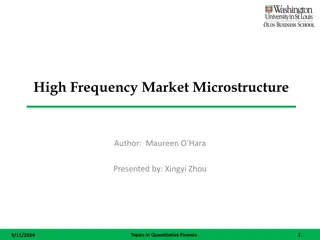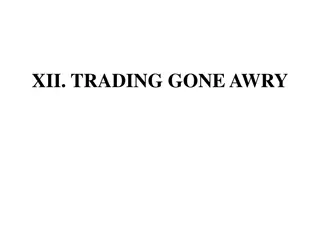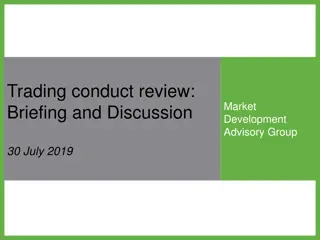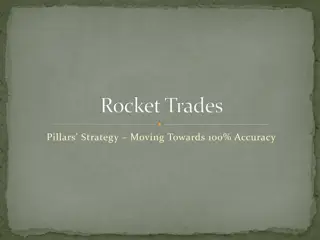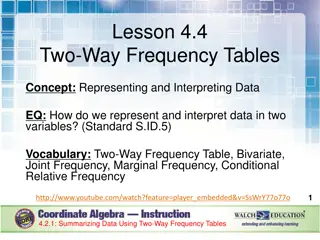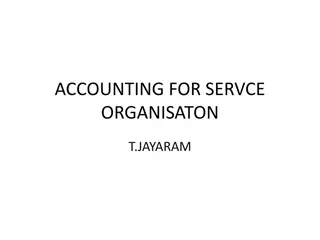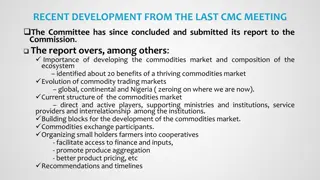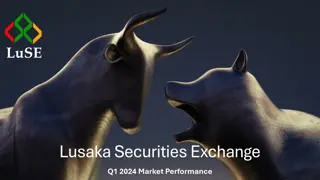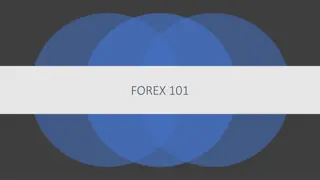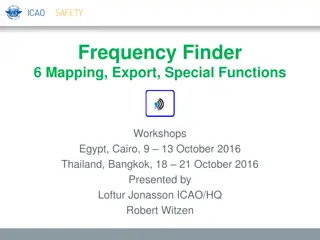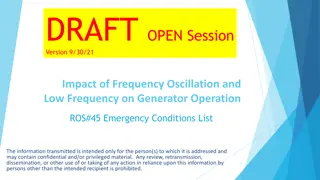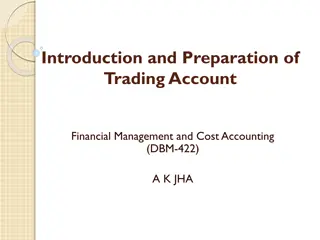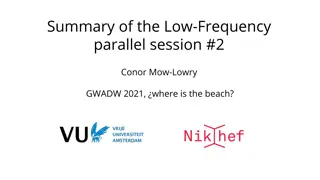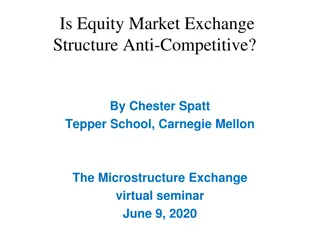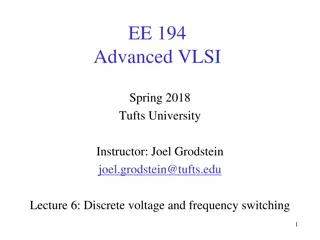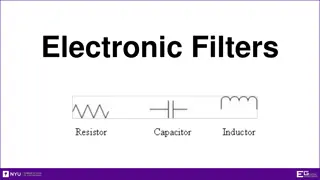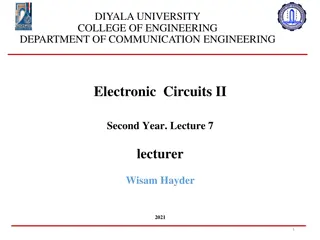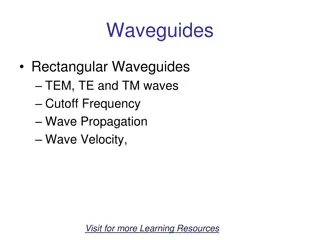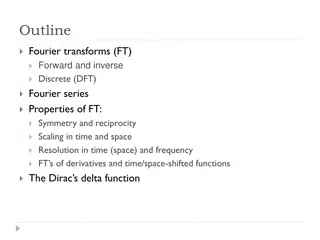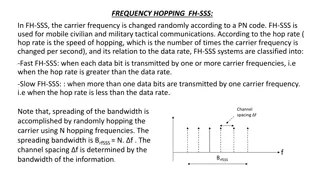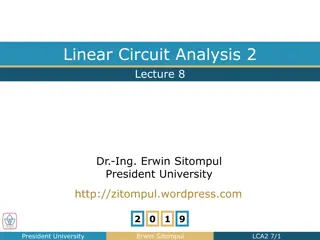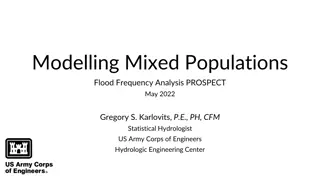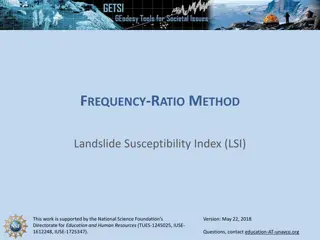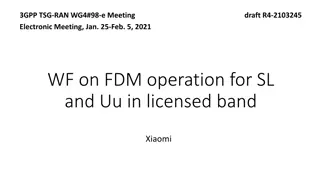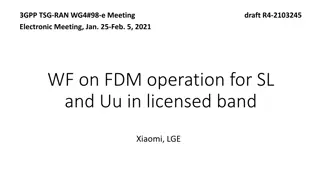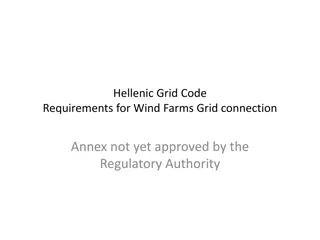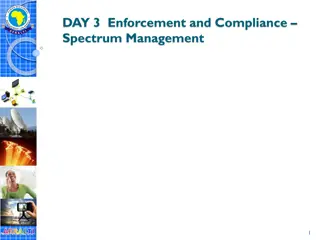Understanding High-Frequency Market Microstructure and Trading Strategies
Exploring the intricate world of high-frequency trading (HFT) and its implications on market microstructure. Delve into how HFT influences traders' strategies, market gaps, technological advancements, and latency management. Discover the evolution of trading behaviors and the impact of regulatory policies on the high-frequency era.
Download Presentation

Please find below an Image/Link to download the presentation.
The content on the website is provided AS IS for your information and personal use only. It may not be sold, licensed, or shared on other websites without obtaining consent from the author. Download presentation by click this link. If you encounter any issues during the download, it is possible that the publisher has removed the file from their server.
E N D
Presentation Transcript
High frequency market microstructure By Maureen O Hara Jiaqi Liu
Abstract Implication of changes in high frequency market microstructure How HFT affects the strategies of traders and markets gaps that arise when thinking about microstructure research issues in the high frequency world. research must also change to reflect the new realities of the high frequency world.
Introduction High frequency trading(HFT): speed the way traders trade the way markets are structured the way liquidity and price discovery arise Microstructure Strategic behavior
The high frequency world: Setting The technology that allowed for high frequency trading was developing over the 1990s, but it was regulatory policy changes intended to increase competition that ushered in the high frequency era.
The high frequency world: High Frequency traders low latency( very fast connections and trading speeds ) co-location of servers within exchanges and dedicated access to trading information ultra-low latency (trading dependent on being at the physical limits of sending orders through time and space) enhancement such as Hibernian Express, Perseus Telecom s new microwave network, new micro-chips Latency: time it takes to send data to a required end point
The high frequency world: High Frequency traders Traders: maximize trading strategy against a particular market s matching engine The matching engine receives the orders sent to the exchange and determines their priority of execution. The matching engine also processes messages regarding the arrival, execution, and cancellation of orders Exchanges: allow high frequency traders to choose from multiple latencies when connecting to the exchanges matching system Exchanges use different priority rules to sequence orders. The most common rule in equity markets is price-time priority. Orders with the best price trade first, and among those with the same price, the first order to arrive has priority.
The high frequency world: High Frequency traders Market making: different from traditional market making in that it is often implemented across and within markets, making it akin to statistical arbitrage; uses historical correlation patterns in price ticks to move liquidity between securities or markets. Other strategies: exploiting the deterministic patterns of simple algorithms such as TWAP(time-weighted average pricing) ; momentum ignition strategies designed to elicit predictable price patterns from orders submitted by momentum traders. Latency arbitrage: technical or operational reasons Unethical behavior
The high frequency world: Non-high Frequency traders(i.e. everybody else) Both institutions and retail traders Fast, below one millisecond ranging down to 500 microsecond
The high frequency world: Non-high Frequency traders(i.e. everybody else) The strategic trading by everybody else impacts market in a variety of ways: dark trading has become more important, trade sizes have fallen dramatically. retail trading has also changed.Alarge fraction of US retail trades are either directly internalized or delivered via purchased order flow agreements to broker-dealer firms.
The high frequency world: Exchanges and other markets Exchanges and trading venues face intense competition to get the right order flow, avoiding if possible the toxic orders that disadvantage other traders------strategic decisions with respect to market design Market s pricing structure Multiple trading platforms Different order types to appeal high frequency traders Access and speed Limit the involvement of HFTs
Microstructure research: Information in a high frequency world trades are not the basic unit of market information the underlying orders are. Adverse selection is problematic because what even is underlying information is no longer clear. Even large traders who know nothing special about the asset's value can be lethal to market makers simply because they know more about their own trading plans.
Microstructure research: Market Data Algorithms chop a parent order into child orders, and these child orders (or some portion of them) ultimately turn into actual trades. Unfortunately, neither the market nor the researcher can see these parent orders, and the child orders could have very different properties. Dynamic trading strategies mean that these orders need not result in the simple buy and sell trades of times past.
Microstructure research:Analyzing Data In the high frequency era, new tools are needed in the microstructure tool box. Issues connected with consolidated tape(a digital program providing continuous, real-time data on trading volume and price for exchange-traded securities) Data could be out of order The high frequency world also challenges empirical analyses using quote data.
Research and regulatory agenda Market linkages Issue of fairness


